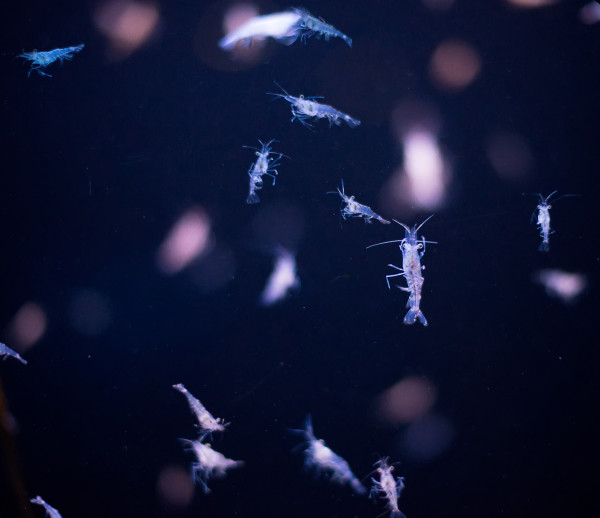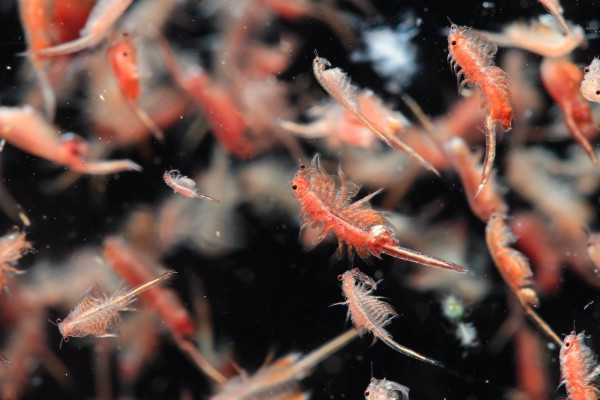5 reasons to thank plankton that you’re alive today
It’s WWF Water Wednesday, when Love Nature television explores the unique characteristics, natural history, environmental challenges and threats facing waters and aquatic species in Canada and around the world, hosted by WWF-Canada president and CEO David Miller. Tonight at 9 p.m. ET/PT watch Plankton Planet, and below read on for five reasons why we should all be concerned with these tiny but essential organisms.
We might not be able to see plankton, or even recognize it if shown an image, but these often tiny ocean-dwelling organisms are an essential part of our lives. From the food we eat to the air we breathe, plankton help produce and sustain all life on Earth. But increasing greenhouse gas emissions and the acidification of our oceans pose a huge threat to these vital creatures, leading to dire consequences for life in the water and on land.
To protect plankton, WWF-Canada works to reduce emissions and adapt to climate change by promoting energy-efficient technologies, developing renewable energy acts and protecting marine habitats. While marine conservation traditionally focuses on big predators such as whales and sharks, preserving plankton is just as important. Here are five reasons why.
1. Plankton make up 95 per cent of ocean life
Whales, sharks, seals and fish might be the most conspicuous marine creatures, but they make up a very small part of the biomass in our oceans. About 95 per cent is formed by plankton, a collective name for thousands — perhaps even millions — of aquatic species, many of which we can’t even see. By definition, plankton exist as drifters rather than swimmers, either because they’re too small or weak to swim against currents, or because they’re non-motile. Microscopic organisms such as algae, fungi and bacteria, as well as larger creatures such as jellyfish, are all considered plankton.
2. They form the base of aquatic food webs
The feeding relationships between organisms are sometimes referred to as chains, but it’s more of a complex web that relies on a variety of plankton. Each plays an important role in the web, but phytoplankton might be the most significant. These microscopic floating algae grow within the first 200 metres deep of the ocean, which receives enough sunlight for them to carry out photosynthesis, just as plants on land do. Because they’re able to produce their own food, phytoplankton form the food web’s base. They feed small, animal-like zooplankton, such as krill, which are then eaten by everything from sardines to manta rays and even multi-ton whales.
3. They generate half of the atmosphere’s oxygen
Trees, shrubs, grasses and other land plants are often thought of as our main source of oxygen, but phytoplankton generate as much oxygen as all of these plants combined. Phytoplankton contain chlorophyll, which harnesses the sun’s energy and converts carbon dioxide into compounds that form the tissue of their body. Oxygen is created as a byproduct of this process, which means that plankton aren’t just an important food source for marine life, and subsequently humans, but they also allow us to breathe.
4. They help absorb carbon emissions
Just as phytoplankton generate a huge chunk of the earth’s oxygen, they also absorb as much as half of the atmosphere’s carbon dioxide. Scientists who took the first comprehensive look at the ocean’s ability to store CO2 found that it acts as a massive sink, trapping the greenhouse gases that are known to contribute to climate change. Without plankton, the concentration of CO2 in our atmosphere would be even higher, and its effects, like rising sea levels and shifting weather patterns, would be even stronger.
5. But our increasing emissions are harming them
As the concentration of greenhouse gases in our atmosphere increases, so does the amount of CO2 in our oceans. Today’s oceans are up to 30 percent more acidic than they were before the Industrial Revolution. But these waters can’t continue to absorb carbon dioxide at the current rate without undergoing significant changes. As the excess CO2 drives the water’s pH levels lower and lower, scientists are concerned it will further weaken the phytoplankton and zooplankton that make up the base of the food chain.




